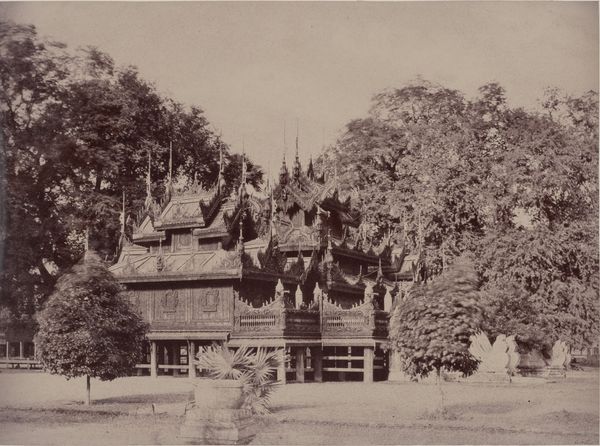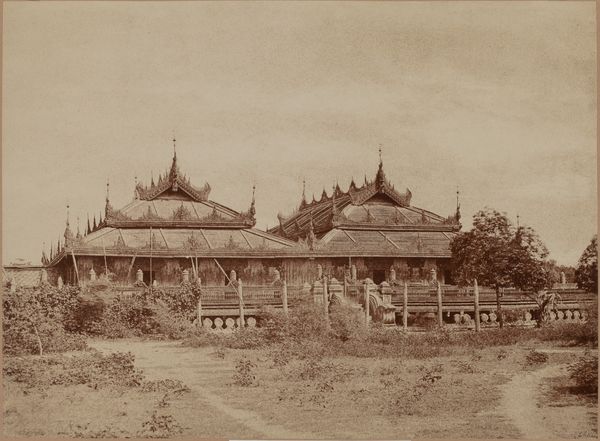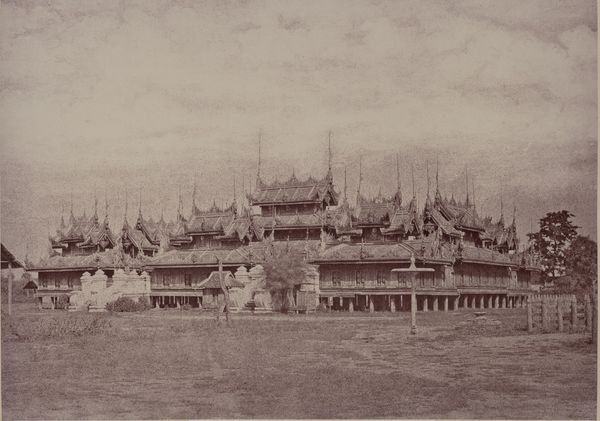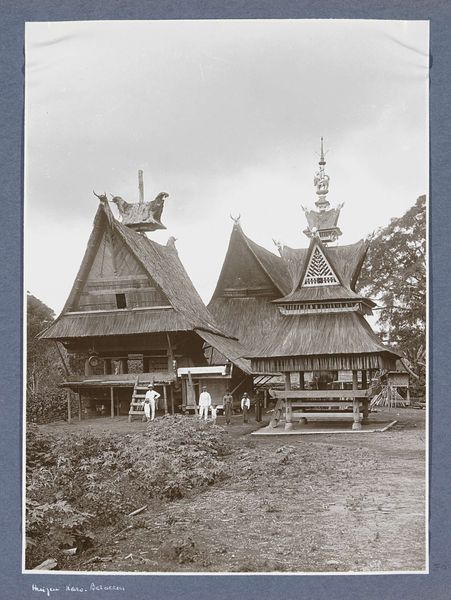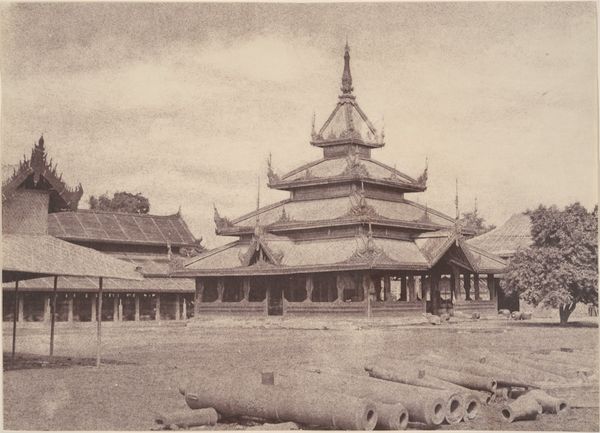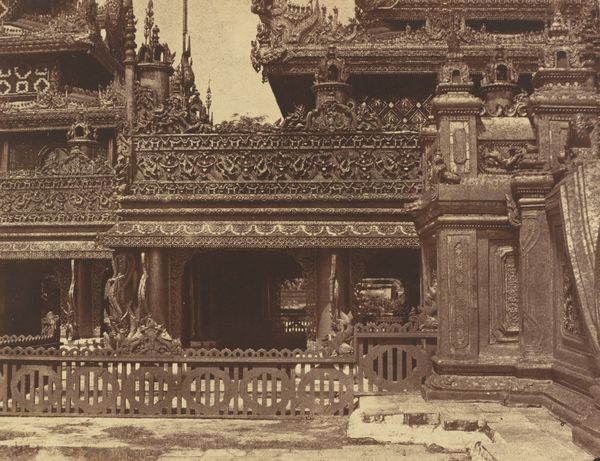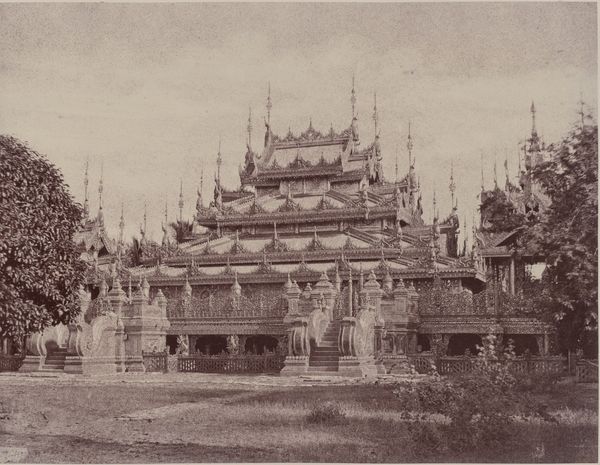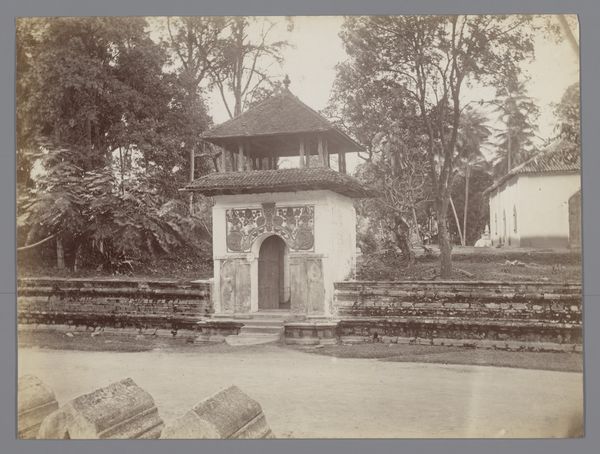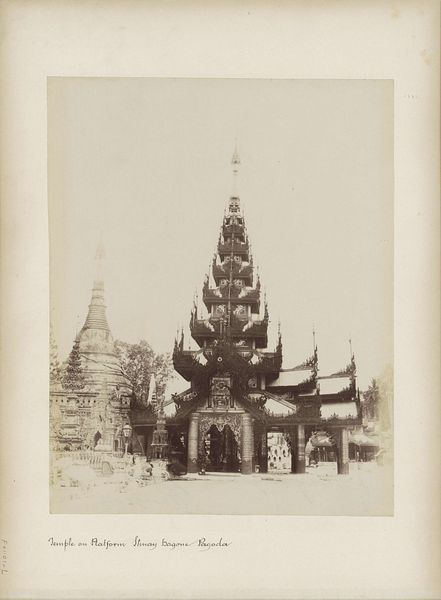
photography, site-specific, albumen-print, architecture
#
asian-art
#
landscape
#
photography
#
site-specific
#
albumen-print
#
architecture
Dimensions: image: 27 × 34.2 cm (10 5/8 × 13 7/16 in.) mount: 45.7 × 58.2 cm (18 × 22 15/16 in.)
Copyright: National Gallery of Art: CC0 1.0
Curator: Linnaeus Tripe, a British photographer, captured this poignant image, "Tsagain Myo: Ruined Tazoung," back in 1855 using the albumen print process. What strikes you first about this scene? Editor: The visual weight of decay, undeniably. Despite the clarity of the photograph, the state of disrepair suggests a deeper narrative of cultural loss, wouldn't you agree? The temple sits forlorn, nature reclaiming its space. Curator: Precisely. Consider the sociopolitical context: this was taken during a period of expanding British colonial influence in Burma. Tripe, in fact, was documenting sites for the British East India Company. The "ruin" may subtly reflect colonial attitudes toward Burmese culture and governance. Editor: It's interesting how the spire of the Tazoung mimics the silhouette of the stupas behind, creating a powerful juxtaposition. These symbols, ubiquitous in the region, tie the sacred to both permanence and ephemerality. How would you relate such notions to its ruins? Curator: Indeed. This particular ruin could signify resistance—a culture persisting even as external forces seek to erode it. Moreover, these images informed colonial administrators. Understanding such sites would've been critical for implementing control or assimilation strategies. Editor: But perhaps we also witness universal human themes beyond power dynamics. Here, the encroaching weeds might echo the ephemeral quality of human achievements against nature's steady reclaiming power, while also speaking to the endurance of faith despite dilapidation. It's a multifaceted visual statement. Curator: I appreciate you pointing to the faith aspect. Perhaps Tripe, intentionally or not, captured a transitional moment where colonial power started to re-shape long-held cultural traditions. Editor: Well, in this one image, time, politics, and the symbolic weight of decay beautifully intertwine. Thank you for enriching my understanding of its cultural context. Curator: The pleasure was all mine, noticing with you how a singular photograph, seemingly straightforward, resonates with so much complexity!
Comments
No comments
Be the first to comment and join the conversation on the ultimate creative platform.
